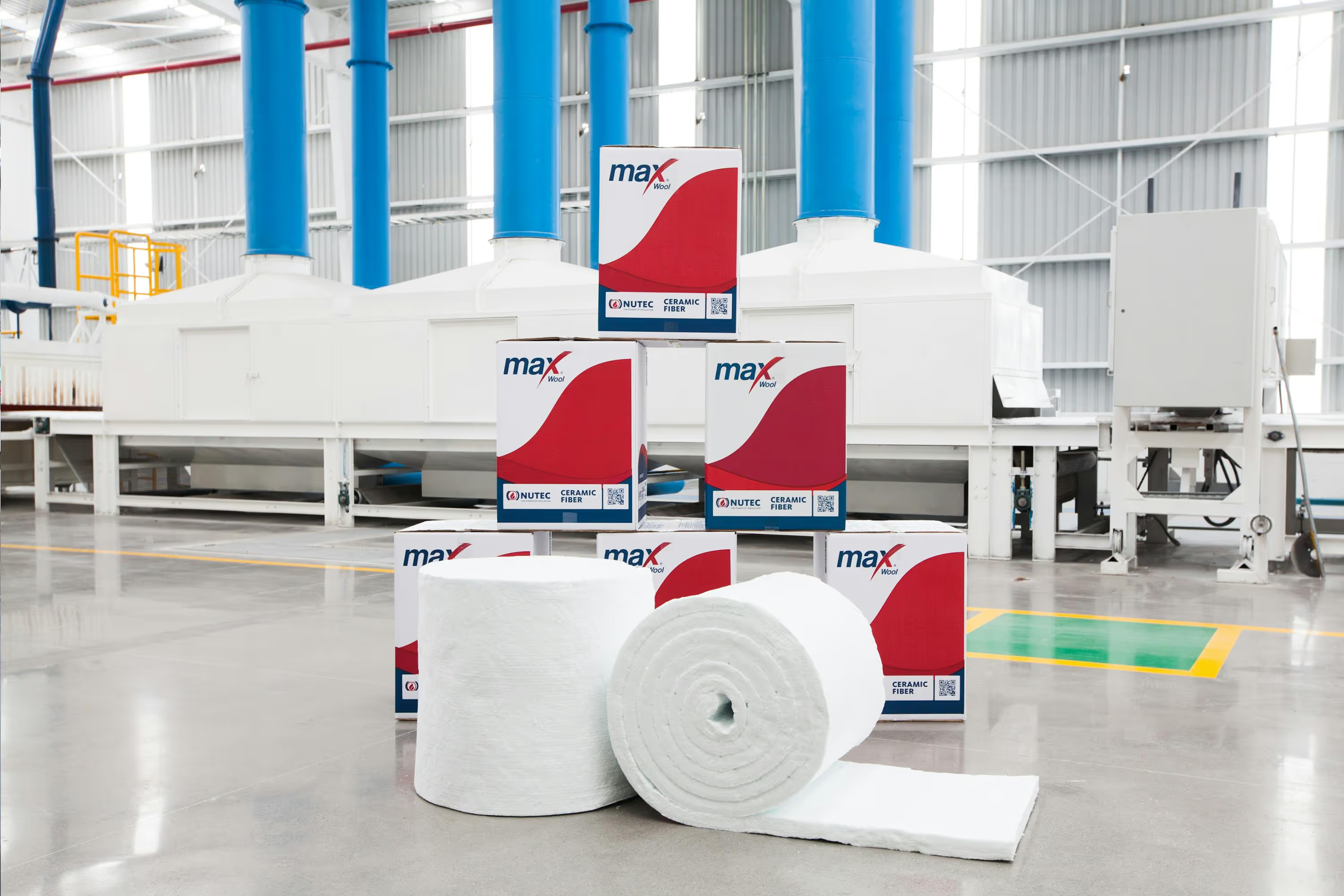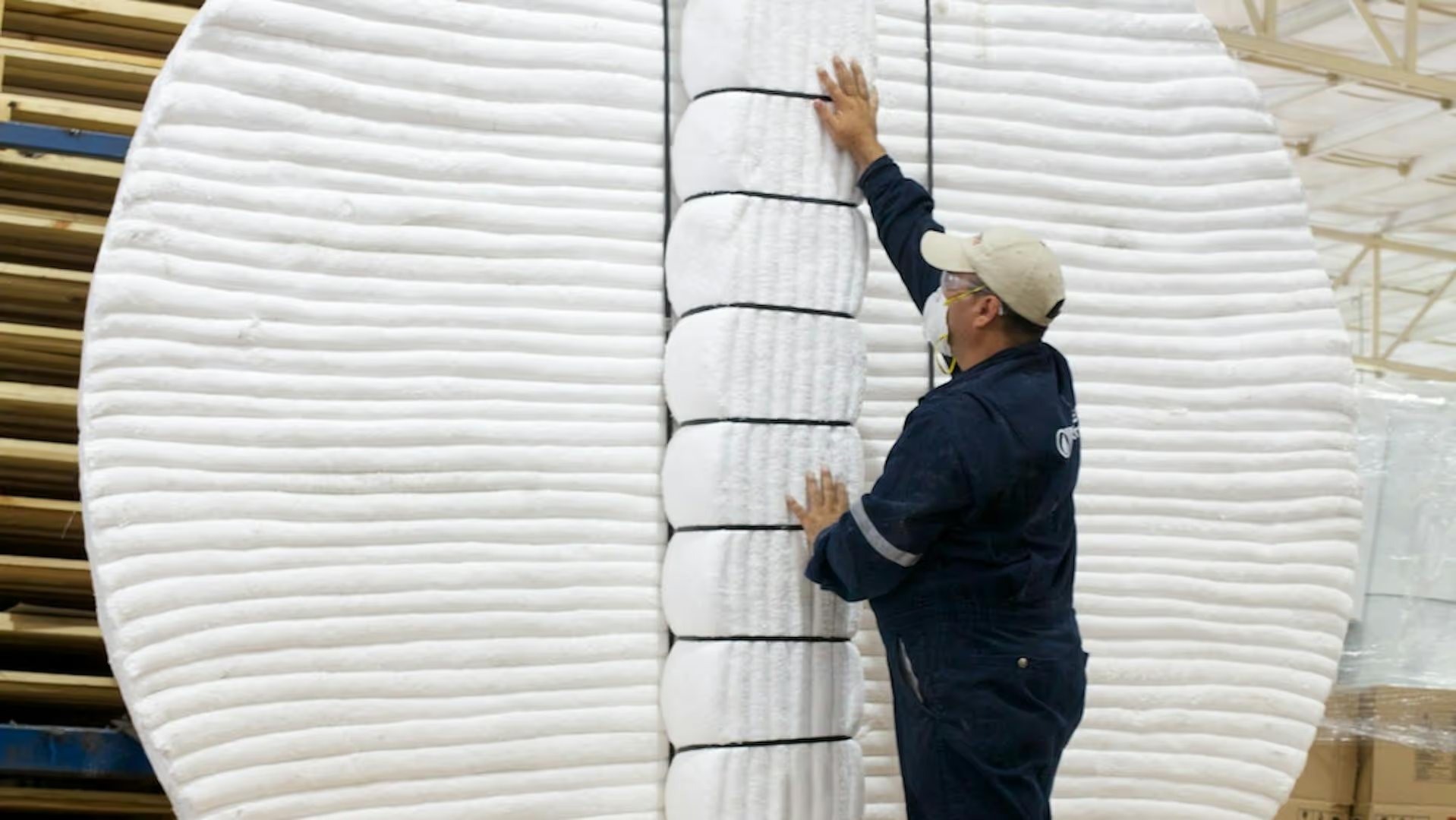
English (Global)
Article
Insulation Systems for Heat Leaks in Industrial Processes
Find out what heat leaks are, their causes, and how to solve them in your industrial processes with thermal insulation systems.
By Christian Tavira
Application Engineering & Technical Support Manager - NUTEC
Within industrial processes, temperature control is essential to guarantee product quality, energy efficiency, and worker safety. However, the equipment can often leak heat, causing significant energy losses.
In addition, heat leaks can increase production costs, shorten equipment life, and pose a risk to worker safety and the environment. Therefore, having processes to detect possible failures and employing effective thermal insulation systems are essential elements for achieving the best possible operation.
This article delves into what heat leaks are, what types exist, and how you can address them in your industrial processes.
What are heat leaks, and why are they problematic in industrial processes?
Heat leakage is the release of thermal energy from an industrial system or process to its surroundings. This can be caused by factors such as:
- Lack of adequate thermal insulation.
- The presence of a fault in the insulating material.
- Reducing atmospheres.
- Other elements that can affect the process, such as corrosion and mechanical wear.
So, we might find them occurring in various pieces of equipment and industrial processes, such as boilers, pipes, tanks, furnaces, kilns, etc. They can also weaken an operation’s energy efficiency levels - as well as adversely affecting equipment, worker and environmental safety.
Having adequate thermal insulation can prevent or significantly reduce heat leakage, allowing for better temperature control and reduced energy costs.
Causes of heat leakage
When the heat generated in a process is transferred to the surrounding environment instead of being used for other purposes, there is heat leakage.
However, once identified, it is advisable to determine the causes of it. Although these may vary according to the context, we present the most frequent:
Insulation damage
This is known as collateral damage present in the work environment. It typically occurs when the insulation receives some sort of impact during a charge and discharge process.
This type of damage can also occur in situations where poor maintenance practices have occurred, with insufficient care given to protection of the materials, consequently giving rise to the creation of cracks, fractures, or damage to the insulation, which leads to heat leakage.
Mistakes during the insulation system installation
Leaving unsealed seams, knocking into insulation during installation, or failing to ensure proper compression of insulating materials can generate heat leaks. For this reason, it is vital to have an engineering team with the necessary experience to guide you in the thermal insulation installation process.
Likewise, you must be able to provide as much information as possible about your process to the engineering team that will be undertaking your insulation installation project.
Reducing atmospheres
Insulating materials are frequently exposed to reducing conditions that harm the ceramic fiber. That is, reducing atmospheres can decrease the thermal qualities of the material or alter the process (for example, hydrogen saturation can increase the thermal conductivity, which may require a reassessment of the insulation system).
Insulation life cycle
Insulation systems tend to degrade over time due to their continuous shrinking process during use or the incidence of factors such as airspeed (causing erosion).
How to identify heat leaks
Some steps that can be followed to identify heat leaks in industrial processes are:
- Carry out a visual inspection of the insulation conditions. Although it is impossible to observe heat directly, its effects can be felt. Therefore, it is advisable to pay attention to high-temperature areas in the equipment, such as pipes and valves. It is also possible to observe the presence of stains or corrosion in the insulating material, as well as noticeable deformations in the insulated equipment.
- Inspection with a thermographic camera. This type of camera can identify areas with high temperatures that are not perceptible to the naked eye. They detect the infrared radiation emitted by objects and convert it into a thermal image that shows hot spots.
- Take temperature measurements. Thermometers (contact or non-contact) can be used to measure the temperature of different parts of the equipment and/or piping. Elevated temperature areas may be indicative of heat leaks.
- Inspect the insulation system. This can become damaged over time and be the cause of heat leaks. Inspecting the insulation helps identify areas where damage exists and the insulation needs replacement or repair.
- Perform an energy analysis. Identifying the process areas where energy is lost and facilitating decision-making to improve efficiency is recommended.
In addition, it is essential to consider routine insulation wear, since it is subject to factors such as erosion caused by the airflow in the process, mechanical wear, or some reducing atmosphere.

Pro tip 1: Contact us if you require a thermographic inspection for your industrial process.
Why is it important to solve heat leaks?
Heat loss in your system can be a complicated matter due to the various consequences it can give rise to. On the other hand, implementing effective measures for its correction can provide you with the following advantages:
- Greater energy efficiency. Suppose your industrial process is controlled and well-insulated. In that case, you can avoid heat leaks, which means the process will consume less energy to achieve the desired result, and also contribute positively to the environment.
- A safer working environment. In other words, preventing equipment from overheating and, in this way, avoiding accidents.
- Better equipment lifetime. Equipment without heat leaks extends its useful life, thus being an excellent way to positively impact the cost efficiency of the industrial process.
- Work according to regulations.
How to solve heat leaks with thermal insulation systems
Leak detection and remediation can be complex and require a multidisciplinary approach. It is advisable to have a team of insulation experts who can help identify and correct heat leaks in your installation.
To solve a heat leak, it is necessary to consider factors such as the following:
- Selection of suitable materials. Temperature is not the only factor to consider when choosing a suitable insulating material. A thorough understanding of the process is necessary to find the correct product.
- A proper design of the insulation system. This can reduce heat leakage and increase energy efficiency. Techniques such as using multiple layers of insulation, radiant barriers, and sealing joints help prevent leaks.
- Proper installation. The manufacturer's installation instructions and industry standards must be followed to ensure appropriate sealing and placement.
- Inspections and regular maintenance. Detecting possible failures or damage to the insulating material, and its timely correction, are paramount in prolonging its lifetime.
- Staff training and experience. It is essential to have a team with the ability to execute a maintenance plan that includes actions such as continuous visual inspection, and a proper evaluation of the energy consumption of the process.
Pro tip 2: Some products allow you to increase the useful life of the insulation, such as MaxPumpable.

Pro tip 3: Several factors influence the choice of a thermal insulation solution. Read about them here
To summarize
Implementing an insulating solution requires proper installation and effective planning. It is crucial to have professionals trained and experienced in installing thermal insulation systems to guarantee the effectiveness of the insulation used in the process.
In addition, performing periodic maintenance of these systems to ensure their proper functioning and to detect possible leaks or damage to the material is essential. This would bring the following benefits:
- Reduction of energy costs. By avoiding heat losses and reducing the energy needed to obtain the desired temperature, a positive impact can be made on the operation’s running costs.
- Improved security. The risk of fires, explosions, and other accidents associated with heat leaks is reduced.
- Longer equipment lifetime. Avoiding overloading equipment can extend its useful life and reduce the need for repairs or replacements.
- An improvement in the quality of the product is achieved.
- Ensures regulatory compliance based on industry or application standards.
Thermal insulation systems help maintain proper temperatures, increasing both the efficiency and safety of the process. In summary, improving an industrial operation’s efficiency, productivity, and profitability is a wise investment overall.
Contact us today if you want to explore and acquire NUTEC's high-temperature engineered solutions.
Want to know more?
At NUTEC, we are committed to providing you with valuable content that helps you make informed decisions for your business. Thank you for taking the time to read this entry and we hope it provided you with insights that you can apply to your operations.
If you have any questions or would like to learn more about our products, please don’t hesitate to contact us.
To get in touch, simply fill out the form, and one of our experts will get back to you as soon as possible.
© NUTEC Incorporated 2025



